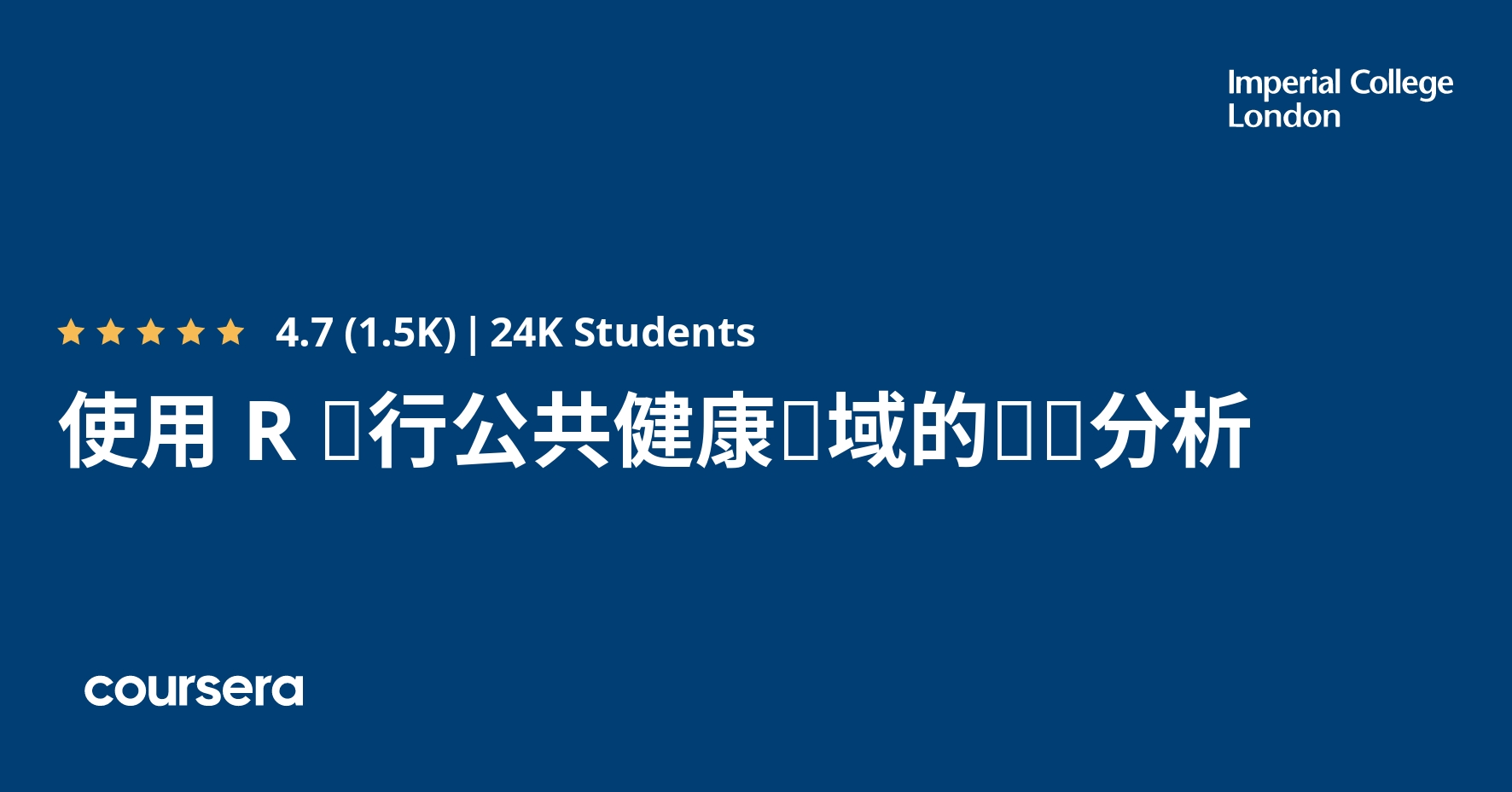Description
Statistics are everywhere. The probability it will rain today. Trends over time in unemployment rates. The odds that India will win the next cricket world cup. In sports like football, they started out as a bit of fun but have grown into big business. Statistical analysis also has a key role in medicine, not least in the broad and core discipline of public health.
In this specialisation, you’ll take a peek at what medical research is and how – and indeed why – you turn a vague notion into a scientifically testable hypothesis. You’ll learn about key statistical concepts like sampling, uncertainty, variation, missing values and distributions. Then you’ll get your hands dirty with analysing data sets covering some big public health challenges – fruit and vegetable consumption and cancer, risk factors for diabetes, and predictors of death following heart failure hospitalisation – using R, one of the most widely used and versatile free software packages around.
This specialisation consists of four courses – statistical thinking, linear regression, logistic regression and survival analysis – and is part of our upcoming Global Master in Public Health degree, which is due to start in September 2019.
The specialisation can be taken independently of the GMPH and will assume no knowledge of statistics or R software. You just need an interest in medical matters and quantitative data.
In each course, you’ll be introduced to key concepts and a data set to be used as a worked example throughout that course. Public health data are messy, with missing values and weird distributions all too common. The data you’ll use are either real or simulated from real patient-level data sets (all anonymised and with usage permissions in place).The emphasis will be on “learning through doing” and “learning through discovery” as you encounter typical data and analysis problems for you to solve and discuss among your fellow learners. You’ll get the chance to work things out for yourself and with your peers before accessing the answers and explanation provided by the instructors.








